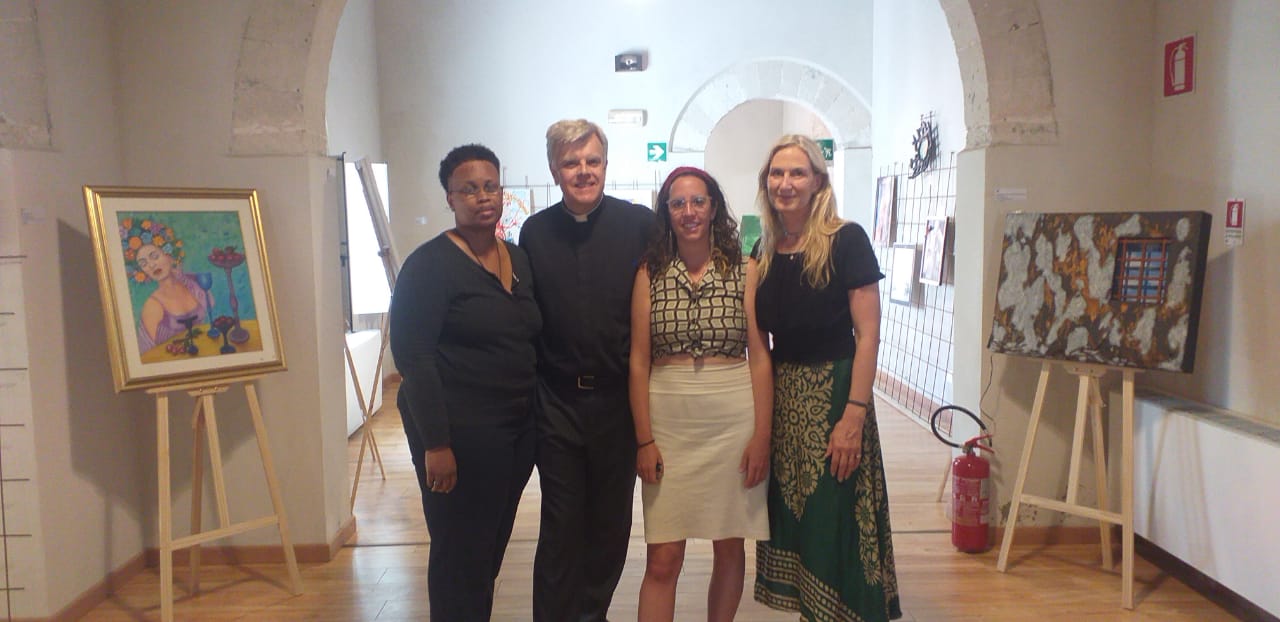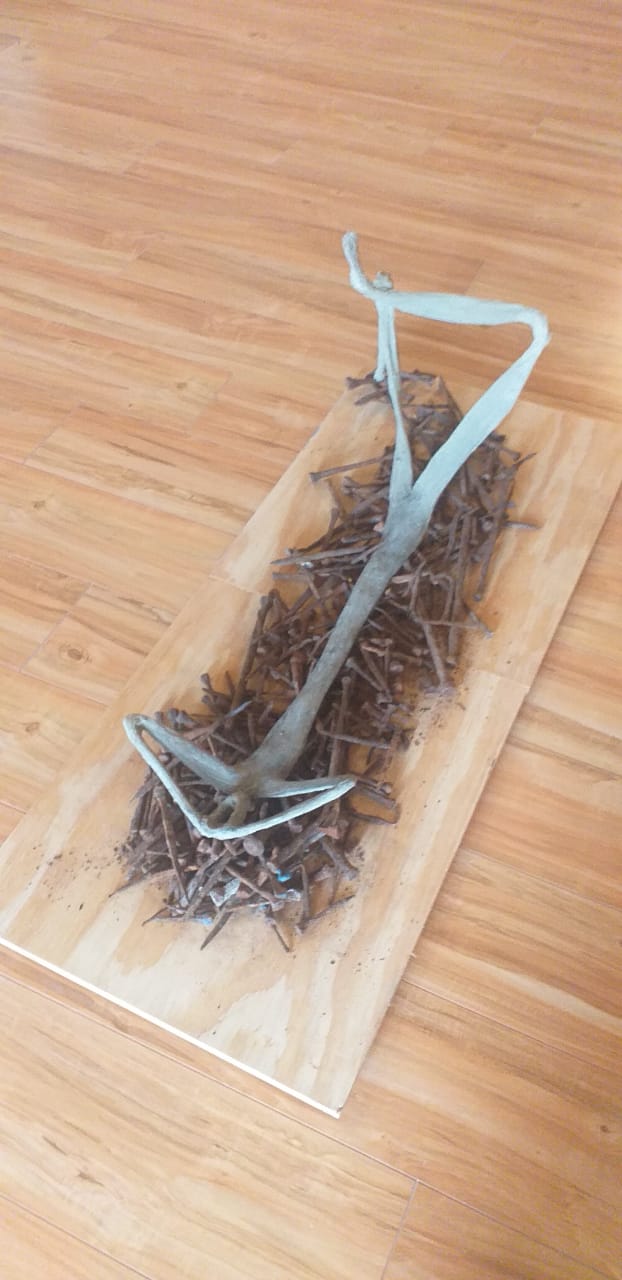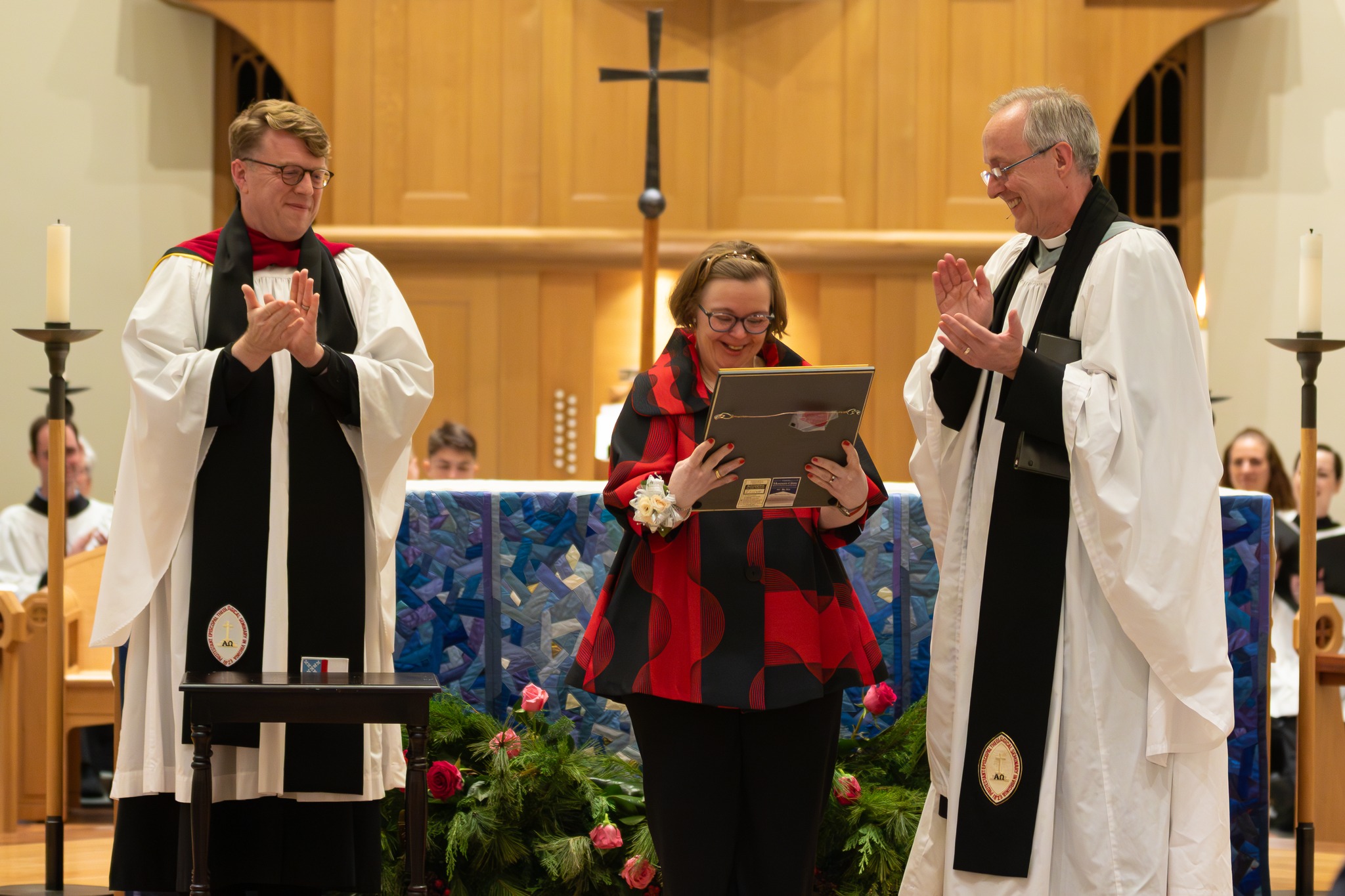
The Ministry of Mitzi Budde
Mitzi Budde, D.Min, Head Librarian and the Arthur Carl Lichtenberger Chair for Theological Research, retires after 33 years. The Rev. A. Katherine Grieb, Ph.D., ’83, reflects on the profound impact she has had on VTS.

Together we make The Episcopal Church stronger

(L-R) Dana Lewis-Ambrose, Virginia Theological Seminary doctoral student, the Rev. Dr. Robert Flanagan, chaplain of The General Theological Seminary, Ann-Marie Dinan Hansen ’23, Professor Yvonne Dohna, Pontificate University Gregorian.
Doctoral student Dana Lewis-Ambrose reflects on a pilgrimage to Favignana, Italy.
“For the greatest things are accomplished in silence – not in the clamor and display of superficial eventfulness, but in the deep clarity of inner vision; in the almost imperceptible start of decision, in quiet overcoming and hidden sacrifice.”
– Romano Guardini, The Lord, p. 15
Art is an expression of ideas and emotions that are often conveyed through the intentional acts of painting, sculpting, film making, dancing, photographing, and performing in theatre. Art does not discriminate, and certainly does not exclude its creator’s present circumstances. Art is as inclusive as any form of engagement could ever be. It has no boundaries, it goes beyond walls and borders, it includes all people, especially those who have been silenced through incarceration.
In June 2023, I was graced with the opportunity to explore prisoners’ works of art in Favignana, Italy. Favignana is a fascinating place, well known for its history of prisons, and home to a distinctive Art Prison museum.
This time of pilgrimage gave me the chance to engage in what theologian Father Romano Guardini describes as the three-fold seeing, having explored the lives of incarcerated people through their artistic creations. This permanent exhibition of prison art, research, and re-socialization in Favignana led me to reconsider the statement made by Guardini, when he writes in The Lord:
“Something must exist in which the truth of the heart can constantly renew itself, in which the spirit can be cleansed, the eye cleared, the character strengthened. And there is: adoration. Nothing is more important for man than to incline his spirit before God, personally to experience the truth that is God – this is great and sacred and salutary for body and soul.” (p. 578)
In the Favignana exhibition, there was one particular piece of art which captured my attention. This art piece was quite simple but spoke volumes as its own creation. Even without a visible label, this piece of art, took me down the memory lane of my ancestry, making me think of the sweat, blood, and tears of my African ancestors who overcame slavery, racism, discrimination, and victimization, creating the opportunity for political independence and democratic self-governance. It is through their efforts that our rights and freedoms are no longer a dream or a hope, but are now an actual reality, and we are an emancipated people.

A piece of art that spoke to the writer.
Similarly, this art piece also evoked for me the lifelong struggles of one of the greatest heroes within African heritage: anti-apartheid activist Nelson Mandela, who was brought before the South African courts, and was later convicted on charges of sabotage, and other crimes committed during the movement against apartheid.
Mandela served 27 years in prison, many of which were spent on Robben Island. He was required to sit in a prison yard, on the ground in the hot sun, engaging in labor, as a part of his punishment.
But Mandela’s time in prison did not define his legacy, as knowledge, time, space, truth, love, freedom, seeing and being were performing something transformational while he was there. As a result, Mandela’s prison time would not only be a consequence of his own actions, but it also became the response to something even greater than he would ever have imagined. The rest of his story is well known, he went on to become the first Black President of South Africa, serving in office from 1994 to 1999.
Art played a meaningful role in the life of Mandela following his prison time. In May 2002, Mandela created a series of sketches that reflected his time on Robben Island. To ensure that he captured the essence of his prison stay, Mandela revisited the island, translating his experience into art using unique style and bright colors.
All in all, Mandela possessed the knowledge, time, space, truth, and ability to see and be to recognize that his previous actions would trigger certain consequences for him, which would later on have an even greater impact on future generations. Put another way, his selfless actions activated certain penalties, leading to his time in prison, while also setting into motion his elevation to an unforgettable presidency.
Undoubtedly, Mandela was able to be during those moments of persecution, and still see into the greater beyond. He had the knowledge, the time, and the space to prepare himself for what was to come. During his prison stay, he was able to exercise love in the beginning, and still accomplish freedom in the end.
Conclusion
It was Guardini who wrote:
“None of the great things in human life springs from the intellect; every one of them issues from the heart and its love.”
― Romano Guardini, The Lord, p.18
This statement is definitely a valid one when consideration is given to a life that is restricted, but then takes on an engaging outlet to remedy and reform it. How else can a person be restored to wholeness? Afterall, is it not the heart that sets into motion the body, to breathe life into a withering soul?
Just as was the case with the Apostle Paul – who was imprisoned in Caesarea and in Rome, where he wrote the “prison” epistles – these exhibits of Favignana prison art have become an outlet for their incarcerated creators to be liberated, restored, mended, and returned to newness of life. It is from behind the prison walls that the incarcerated have a chance to be made whole again, for it is in these works of art that the incarcerated can be identified, having expressed themselves through knowledge, time, space, truth, love, freedom, seeing and being.
The past is what it is, and while being in prison might be a consequence of an individual’s actions, through these works of art, these consequences can find a noteworthy response. In the end, this is what restoration can do to a broken person – leading them back to something even greater and better – thus going beyond the incarcerated life.
References
Romano Guardini, The Lord (Gateway Editions, 2012).
Acknowledgements
Dana Lewis-Ambrose expresses sincere thanks to the Very Rev. Ian Markham and the Rev. Dr. Ross Kane of Virginia Theological Seminary, as well as the Rev. Dr. Robert Flanagan of The General Theological Seminary, and Professor Yvonne Dohna of Pontificate University Gregorian, for extending the invitations, funding, and requisite permissions that made this pilgrimage possible.

Mitzi Budde, D.Min, Head Librarian and the Arthur Carl Lichtenberger Chair for Theological Research, retires after 33 years. The Rev. A. Katherine Grieb, Ph.D., ’83, reflects on the profound impact she has had on VTS.

The Thomas Dix Bowers Preaching Fellowship Fund was established at Virginia Theological Seminary on May 6, 2008, by family and friends of the Rev. Dr. Thomas Dix Bowers, VTS ’56.

The Rev, Rode Molla, Ph.D., Assistant Professor, and the first Berryman Family Chair for Children’s Spirituality and Nurture at Virginia Theological Seminary, reflects on the legacy of the Rev. Jerome Berryman, D.Min.

Virginia Theological Seminary was honored to confer the Dean’s Cross for Servant Leadership on Ellen Wofford Hawkins in recognition of her deep faith and ability to bring sunshine into the lives of others.